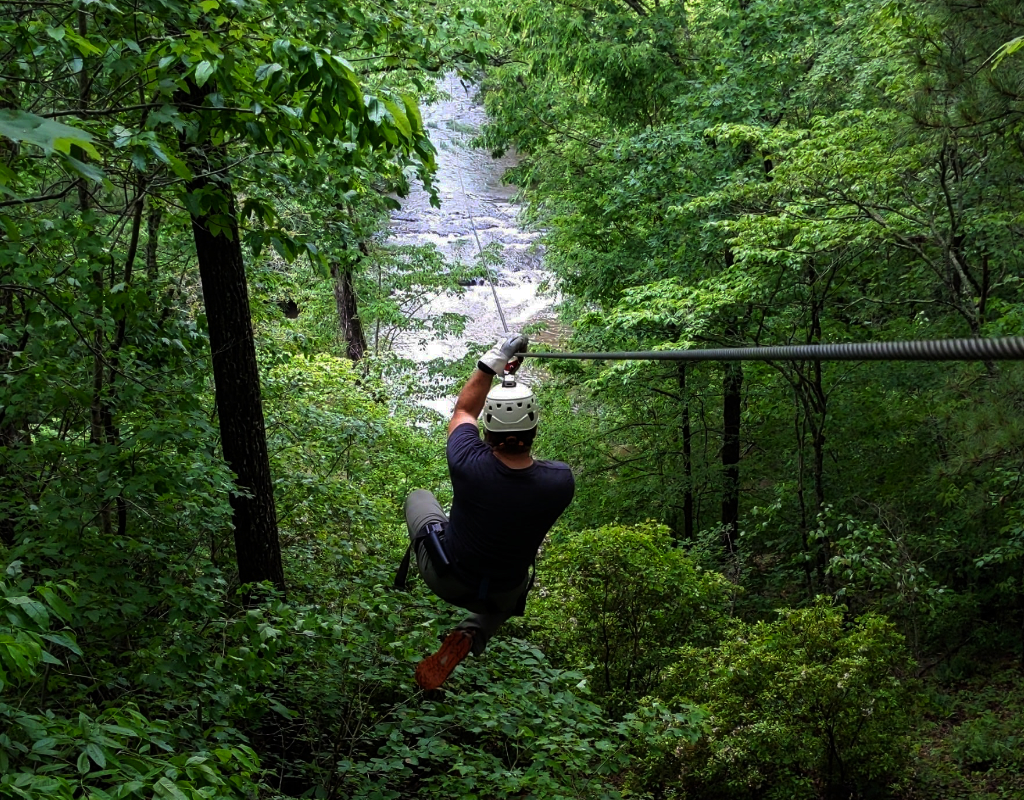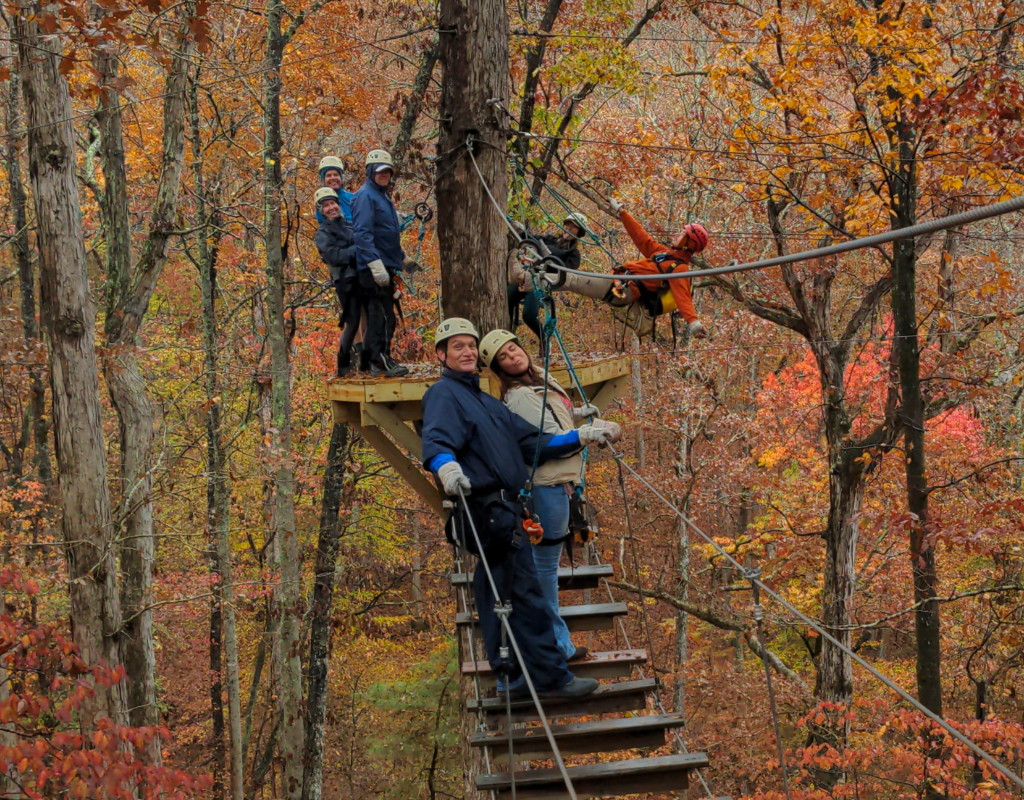Zip lining is an exhilarating adventure, but not all zip lines are created equal. Some modern zip line tours function more like theme park rides, where the rider simply sits back and lets the equipment do all the work. That’s not what we do at Historic Banning Mills.
At Historic Banning Mills, we believe in experiential adventure—an experience that challenges, empowers, and engages you every step of the way. Just like white water rafting, where you must paddle, steer, and follow your guide’s instructions, our zip line tours require active participation.
Every guest learns how to control their speed, follow safety instructions, and truly engage with the experience. This makes our course more immersive, but it also means that weight limits are even more crucial for both safety and guest enjoyment.

What Are the Zip Line Weight Limits?
At Historic Banning Mills, our weight limits are:
- Maximum Weight: 250 lbs. for females, 285 lbs. for males
- Minimum Weights: Vary depending on the tour level
These limits have been carefully established based on over 20 years of experience and engineering data from the designers and builders of our zip line course—home to the longest zip line canopy tour in the world! These limits apply to a participant’s gender assigned at birth.
If zip line cables can hold thousands of pounds, why do weight limits matter? Let’s break it down.
How Zip Lines Work
A gravity zip line operates by sending a rider down a cable from a higher platform to a lower one. However, the cable isn’t completely tight—it has a built-in sag that helps control speed and ensure a smooth ride.
When you launch, you gain momentum as you travel toward the lowest point of the cable. From there, the remaining momentum helps carry you back up toward the landing platform.
Now, here’s why weight limits are essential:
If You Are Under the Weight Limit
- Riders who are too light may not build enough momentum to reach the next platform.
- This can leave them stuck mid-line, requiring a guide to retrieve them.
- While not dangerous, it can be uncomfortable and slow down the tour for everyone.
If You Are Over the Weight Limit
- Heavier riders generate more momentum and may approach the platform too fast.
- Coming in at high speeds increases the risk of hard landings or injuries.
- For safety, we must ensure that all participants can stop properly without excessive impact.

Why Our Weight Limits are Different for Males and Females
Zip line safety is a complex science that involves more than just weight—it includes height, center of gravity, braking mechanics, and harness fit.
At Historic Banning Mills, we don’t just send you down a zip line—we teach you how to control your own speed and participate in the process. This is why our weight limits are designed with physics, safety, and guest capability in mind.
Our limits are based on typical differences in BMI, muscle mass, and weight distribution for the average person, all of which affect rider positioning and braking ability. Taller individuals tend to carry weight differently and have better leverage when braking, allowing them to participate at a higher weight threshold.
Rather than limiting everyone to 250 lbs., we’ve found that allowing a higher maximum for males provides a fair opportunity for all participants while maintaining the highest possible safety standards.
Our approach has worked effectively for over 20 years, helping us create a thrilling yet secure experience for all guests.
Are You Ready for the Adventure of a Lifetime?
Our zip line tours aren’t passive rides—they’re authentic, heart-pounding, fully immersive experiences designed to empower guests and bring them closer to nature. Weight limits aren’t about exclusion—they’re about keeping our guests safer while ensuring every ride is smooth, thrilling, and enjoyable.
Discover Banning Mills




For more information, check out our Adventure FAQs or give us a call before booking your zip line tour!




